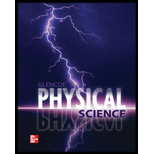
To describe: why a
To explain: how bonds can form with two examples.
Explanation of Solution
Introduction:
An atom loses or gain or share electrons and they are combined to form a compound. This type of attraction is said to be a chemical bond.
An atom can lose or gain or share an electron and are combined to form a compound. Atoms can lose or gain electrons to get stability. Chemical bonds are formed when electrons are shared, gained, or lost between atoms.
Example of how bonds form:
Gaining and share of electrons: formation of NaCl.
The atomic number of sodium is 11. So its electronic configuration is 2.8.1.
The atomic number of chlorine is 17, so the electronic configuration of chlorine is 2.8.7.
Sodium loses its outer shell electrons and form
Sharing of electrons: formation of
The atomic number of oxygen is 8.
Its electronic configurations will be 2.6.
The atomic number of H is 1.
So its electronic configuration is 1.
Therefore, oxygen needs 2 electrons to complete its outermost shell and attains stability. Hydrogen needs 1 electron to complete its outermost shell. As there are 2 hydrogen and each hydrogen atom needs 1 electron and thus form
Conclusion:
Thus, a chemical bond is very important for the formation of different compounds either ionic or covalent bonds.
Chapter 18 Solutions
Glencoe Physical Science 2012 Student Edition (Glencoe Science) (McGraw-Hill Education)
Additional Science Textbook Solutions
Conceptual Physics (12th Edition)
Introduction to Electrodynamics
College Physics: A Strategic Approach (3rd Edition)
Modern Physics
College Physics (10th Edition)
Physics for Scientists and Engineers: A Strategic Approach with Modern Physics (4th Edition)
 College PhysicsPhysicsISBN:9781305952300Author:Raymond A. Serway, Chris VuillePublisher:Cengage Learning
College PhysicsPhysicsISBN:9781305952300Author:Raymond A. Serway, Chris VuillePublisher:Cengage Learning University Physics (14th Edition)PhysicsISBN:9780133969290Author:Hugh D. Young, Roger A. FreedmanPublisher:PEARSON
University Physics (14th Edition)PhysicsISBN:9780133969290Author:Hugh D. Young, Roger A. FreedmanPublisher:PEARSON Introduction To Quantum MechanicsPhysicsISBN:9781107189638Author:Griffiths, David J., Schroeter, Darrell F.Publisher:Cambridge University Press
Introduction To Quantum MechanicsPhysicsISBN:9781107189638Author:Griffiths, David J., Schroeter, Darrell F.Publisher:Cambridge University Press Physics for Scientists and EngineersPhysicsISBN:9781337553278Author:Raymond A. Serway, John W. JewettPublisher:Cengage Learning
Physics for Scientists and EngineersPhysicsISBN:9781337553278Author:Raymond A. Serway, John W. JewettPublisher:Cengage Learning Lecture- Tutorials for Introductory AstronomyPhysicsISBN:9780321820464Author:Edward E. Prather, Tim P. Slater, Jeff P. Adams, Gina BrissendenPublisher:Addison-Wesley
Lecture- Tutorials for Introductory AstronomyPhysicsISBN:9780321820464Author:Edward E. Prather, Tim P. Slater, Jeff P. Adams, Gina BrissendenPublisher:Addison-Wesley College Physics: A Strategic Approach (4th Editio...PhysicsISBN:9780134609034Author:Randall D. Knight (Professor Emeritus), Brian Jones, Stuart FieldPublisher:PEARSON
College Physics: A Strategic Approach (4th Editio...PhysicsISBN:9780134609034Author:Randall D. Knight (Professor Emeritus), Brian Jones, Stuart FieldPublisher:PEARSON





